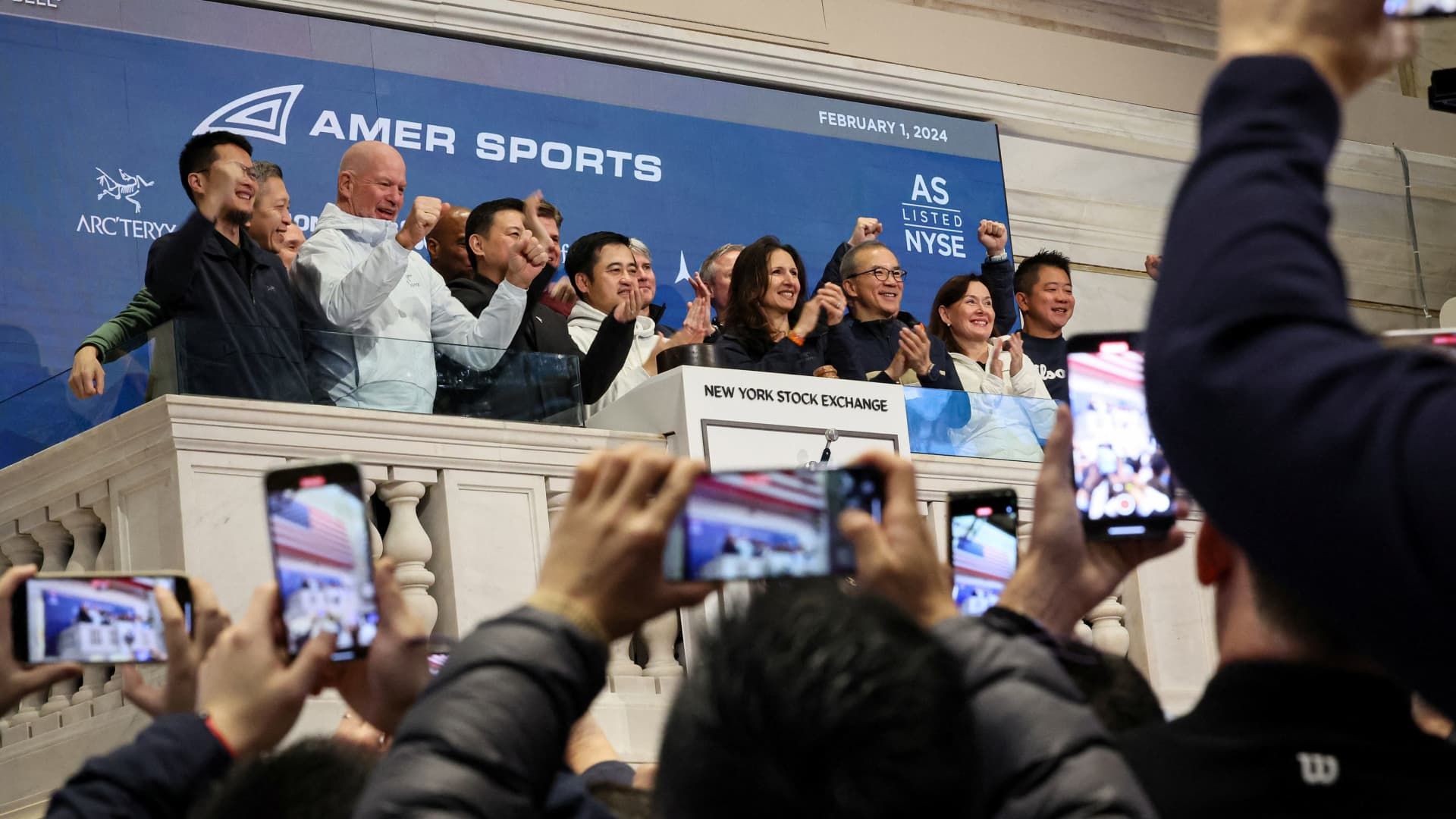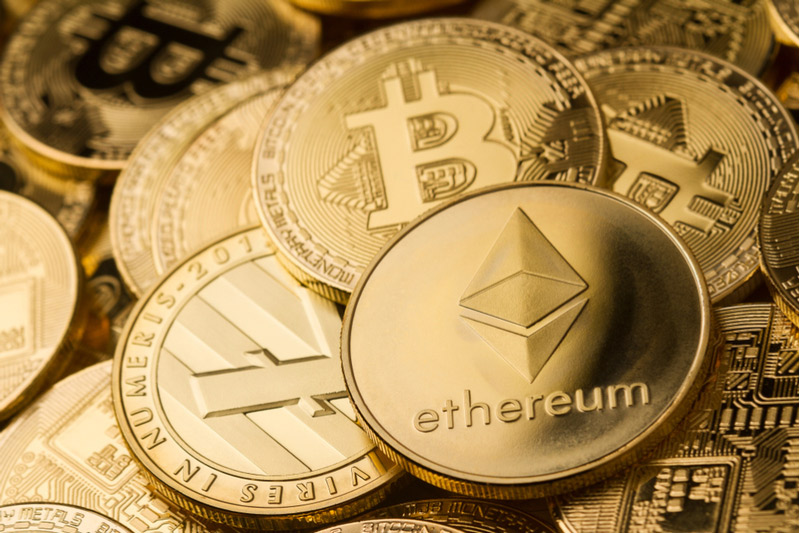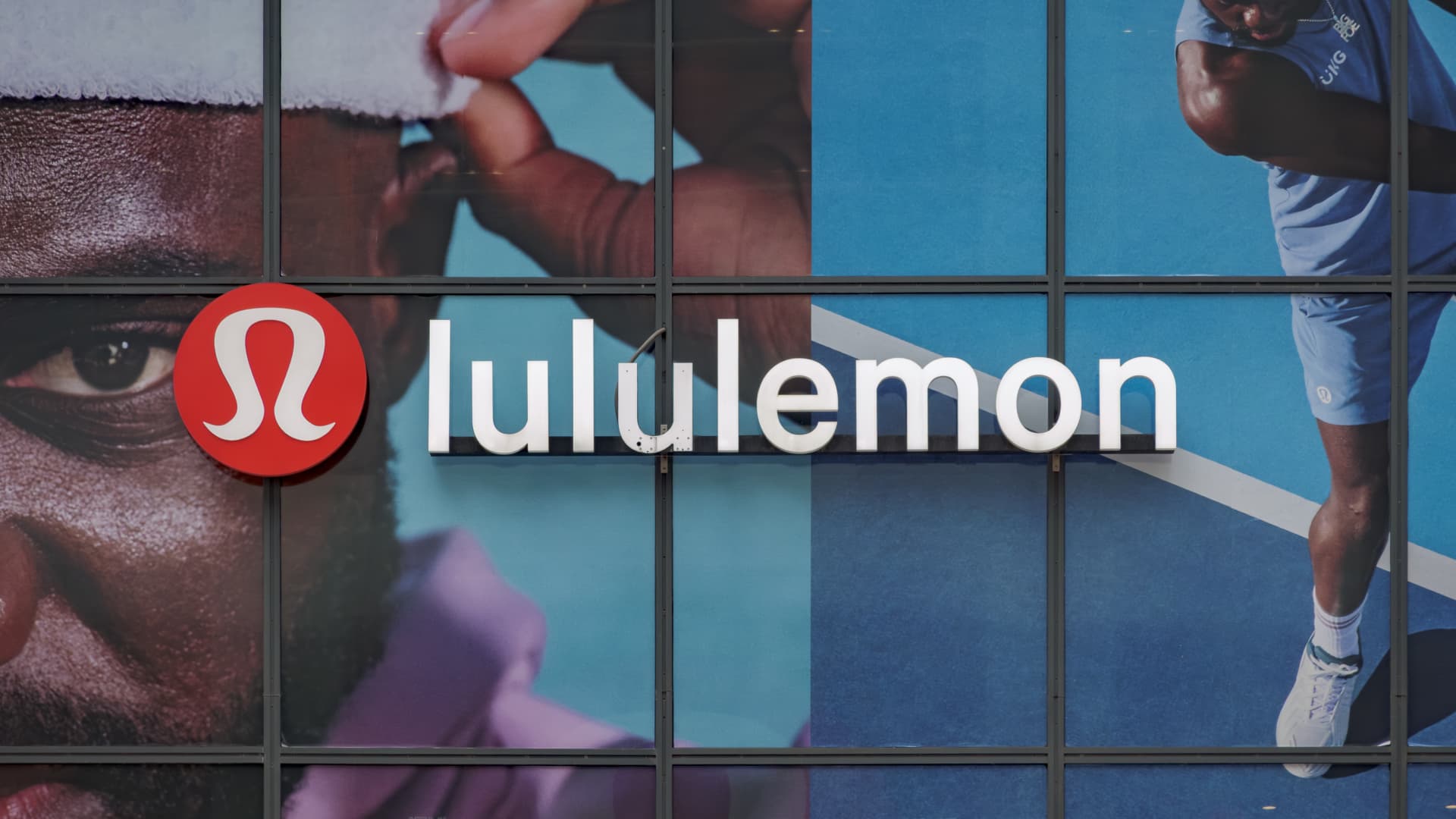Wilson products at the Paragon Sports store in the Chelsea neighborhood of New York on January 4, 2024.
Jeenah Luna | Bloomberg | fake images
Amer Sports, the Finnish athletic company behind the Wilson tennis racquet and Arc'teryx, made a quiet debut on the public markets on Thursday, as shares rose 3% after pricing its initial public offering at a discount.
The stock opened at $13.40 a share on the New York Stock Exchange under the symbol “AS” and closed at the same price. Based on the closing stock price and the company's 484 million outstanding shares, Amer Sports has an approximate market capitalization of approximately $6.49 billion.
Amer had priced its initial public offering at $13 per share and raised $1.37 billion in the offering. It had originally hoped to offer 100 million shares at between $16 and $18 each.
The offering valued Amer at around $6.3 billion, up from a previous valuation of up to $8.7 billion.
When Amer debuted, only 2.5 million shares were traded, indicating little interest from sellers and low for an offering of 105 million shares. Typically, bookrunners would try to open with around 10% of the shares, which would equate to about 10 million shares.
Amer's decision to discount its IPO came after Federal Reserve Chair Jerome Powell indicated the central bank is not ready to start cutting rates, casting a shadow over market sentiment and the faltering IPO market.
Wall Street has been eager to see a resurgence in the IPO market after it was nearly paralyzed over the past two years, but recent debuts, including that of German shoemaker BirkenstockThey have been silenced and failed to impress.
While demand has fallen in the broader consumer discretionary sector, Amer CFO Andrew Page said its target consumers have been resilient and continued to choose its brands.
“Our focus has always been to make the best-in-class products in the world. Our products are full of innovation, our consumers appreciate quality, innovation and novelty,” said Page. “That's the core of who we are as a company, that's the core of what we offer to the market.”
He said he is not worried about Amer's stock performance on a single day and that the company is more focused on executing its long-term strategy.
Amer Sports executives celebrate the company's initial public offering on the New York Stock Exchange in New York City on February 1, 2024.
Brendan McDermid | Reuters
Amer runs some of the most recognizable brands in sports, but its balance sheet is $2.1 billion in debt and it didn't post any profits between 2020 and September 2023, according to a securities filing.
In the nine months ending September 30, 2023, the company earned $3.05 billion in revenue, up from $2.35 billion in the same period a year earlier. It posted a net loss of $113.9 million during the period, up from the $104.4 million it lost in the same period a year earlier.
In an interview with CNBC, CEO James Zheng said Amer plans to use the proceeds from the IPO to improve its balance sheet and fund growth initiatives at Wilson, Arc'teryx and Salomon. He noted that Arc'teryx, known for its expensive winter jackets, has very little unaided brand awareness in North America, particularly the United States, so there is plenty of room to grow.
Investors were also concerned about Amer's ties to China and its dependence on the region, according to a person familiar with the matter.
The company's business in China has been growing at a time of rising tensions between the United States and Beijing. Many companies are trying to diversify their market share so as not to be as exposed to disruptions in the region.
In 2020, Amer did 8.3% of its business in Greater China and in 2022, that figure has nearly doubled to 14.8%. In the nine months ended September 30, 19.4% of sales came from the region.
In response, Zheng said that “it is very important” for sporting goods companies to build a strong footprint in China and Amer has so far seen “a great return” on its investment in the region. She added that while the region is “important” to the company, “it is only part of the whole.”
“Our biggest market is still North America, which accounts for 40% of the business, and Europe accounts for 32%. China right now only accounts for 20%, so that's part of the business,” Zheng said. “We are a global company.”
—Additional reporting by CNBC's Bob Pisani.
Don't miss these CNBC PRO stories:







